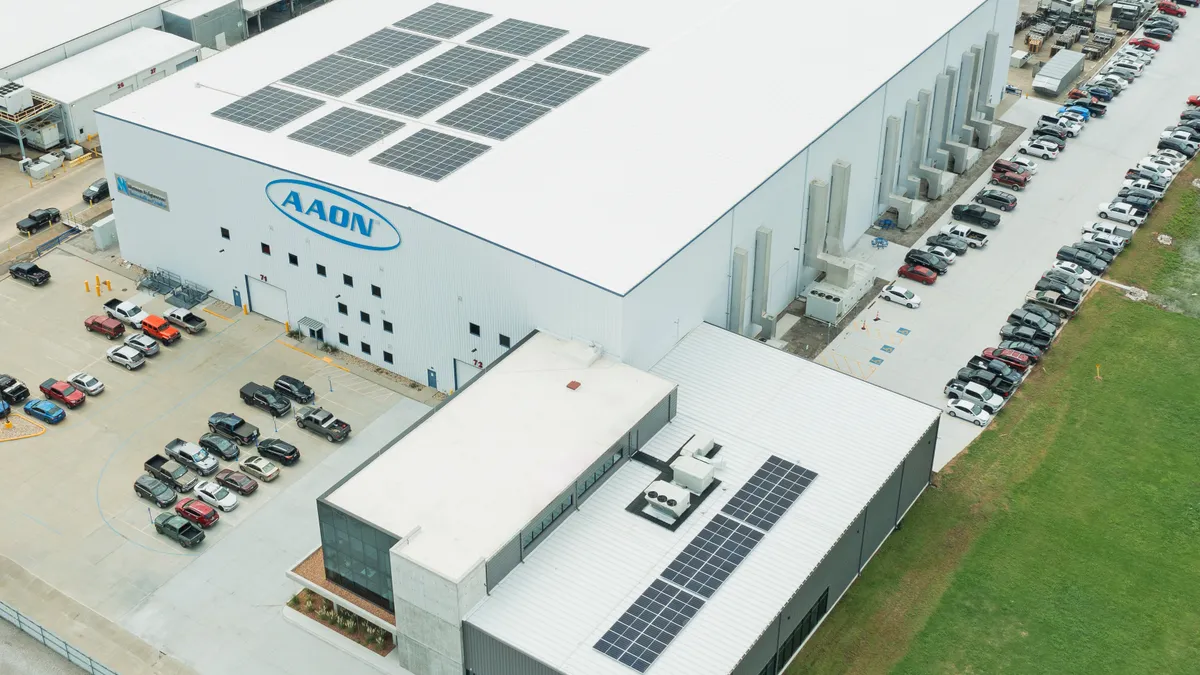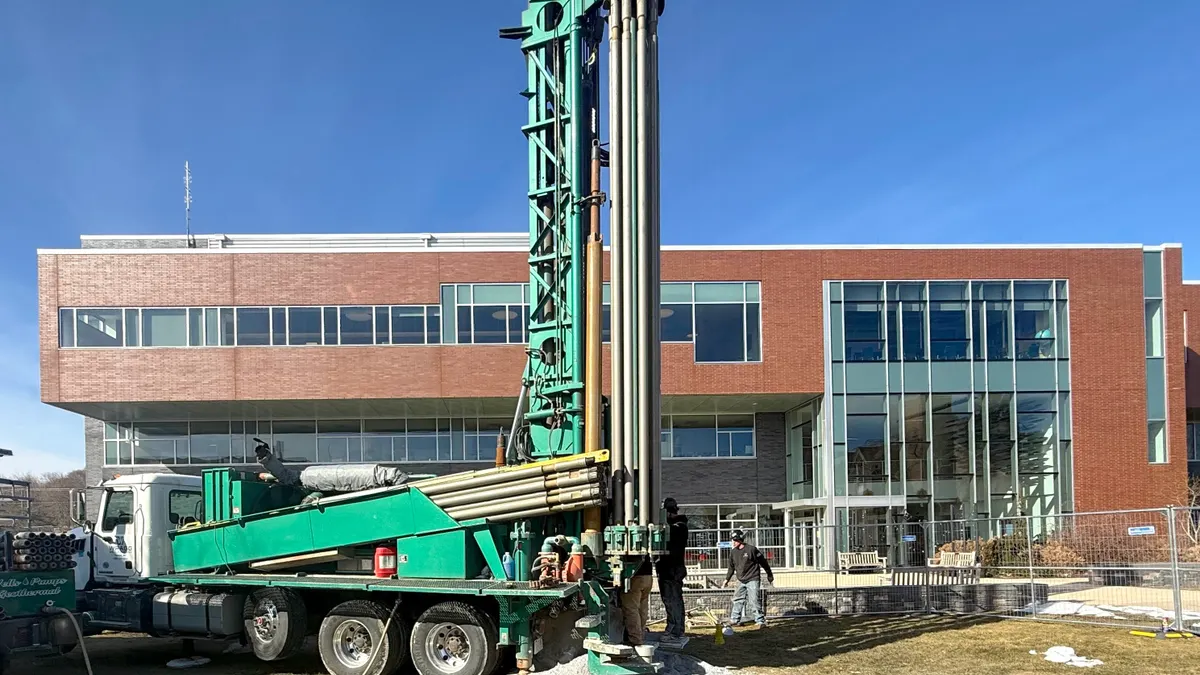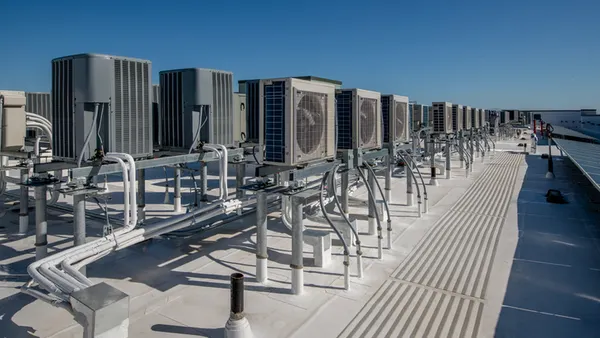Dive Brief:
- AAON has activated 432 solar panels on the roof of its exploration center and innovation lab in Tulsa, Oklahoma, it announced Aug. 22.
- The commercial HVAC solutions firm said the solar panels make the exploration center one of the city’s most energy-efficient structures and advance its goal of achieving net-zero greenhouse gas emissions status.
- The center, AAON’s new corporate headquarters building, will also use advanced building systems, including photovoltaic electricity generation, geothermal fields and high-efficiency heat pumps, to meet that goal.
Dive Insight:
AAON’s panels generate about 240kW of solar energy. The firm, which provides HVAC solutions in commercial and industrial facilities, said it has designed the exploration center’s infrastructure to support more than 800 kW of solar generation, representing one of the largest solar capacities in Oklahoma.
Oklahoma ranks eighth in peak sunlight among U.S. states, making it a hub for solar-powered buildings as the Inflation Reduction Act draws more private capital into the solar industry. As of last year, Oklahoma had installed 112 megawatts of solar capacity. The Solar Energy Industries Association reports that the state has the potential to produce more than 2 gigawatts of solar in the next five years.
The AAON exploration center’s advanced building systems include 100% LED lighting across the building, geothermal wells with more than nine miles of piping, high-efficiency heat pumps for heating and cooling with zero carbon elements and a reflective roof coating, which allows for lower temperatures and an extended life span, the company said. AAON said the center will also share “waste” heat energy with its adjacent Norman Asbjornson Innovation Center Research and Development lab through water loops. It also will share excess solar electricity generation that does not require batteries.
The Public Service Co. of Oklahoma, or PSO, authorized AAON to activate the solar panels in July, Austin Embry, facilities project manager at AAON, told Facilities Dive.
“If you keep increasing the amount of electricity you need, there are concerns that our utility might not be able to meet our demand. At that point, you have to look at creating your own substations. And there’s immense cost-complexity involved in that process. Adding solar lessens the likelihood of having an issue like that,” said Embry who leads upkeep and planning activities for AAON’s facilities and campuses and supports the growth of the firm’s manufacturing capabilities, R&D and marketing programs.
In large swaths of the U.S., local power grids do not have the generating capacity needed to support the future growth of building electrification. In Tulsa, the PSO has roughly 3.8 GW of generating capacity, fueled primarily by natural gas. Last November, the PSO filed a proposal to the Oklahoma Commission Corporation, requesting approval of a fuel-free power plan, including three solar facilities, that would fund its purchase of nearly 1 GW of renewable energy.
“[I]f there’s an electricity grid that is carbon neutral and you own a building and convert the entire building such that all heat and power and water are coming from the grid, the building can become carbon neutral. But that’s only possible when the state electricity grid and the building grid have been adapted. So, many aspects of this business model have to change for many stakeholders,” Jonathan Meyers, partner at HR&A Advisors, said in an interview.
“It's one thing to have electrification. But, a clean grid is the endgame of how you drive down carbon. If you don't have it from a clean grid, it doesn't rebuild sustainability objectives,” Mark Grinis, real estate, hospitality and construction leader at EY Americas, said in an interview.
AAON stated that the “milestone achievement” affirms its commitment to reducing greenhouse gas emissions by boosting operational efficiencies, investing in projects that curb carbon emissions and developing products that help its customers meet their own sustainability goals.
“We need to take a mile-high view,” Embry said. “[Whether it is] adding an assembly line [or] remodeling our offices, when we get an opportunity to do something extraordinary in facilities, we have to take advantage of that. It’s an opportunity for us to show what facilities managers can do.”
The HVAC manufacturer reported a 12.3% drop in its backlog quarter on quarter during the second quarter of 2023. The company’s president and CEO, Gary Fields, cited expectations of further growth in the second half of the year, but he noted that “backlog size and lead times are still higher than we would like them to be.” He added that AAON’s exploration center, which opened in April, will “help further our efforts of taking market share.”
Correction: A previous version of this story featured an incorrect image and caption. We have replaced the previous image with an image of AAON's solar panels and changed the caption accordingly.











